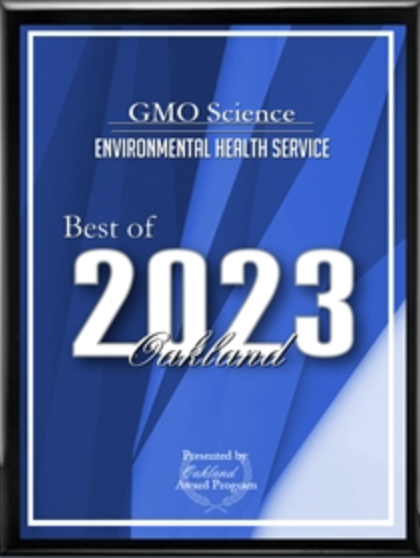At-A-Glance
•Unlike industrial agriculture, regenerative agriculture improves the land rather than depletes it.
•Regenerative agriculture uses practices that regenerate and revitalize the soil and the environment.
•Regenerative agriculture sequesters carbon dioxide from the atmosphere to convert into soil organic matter, thereby mitigating climate change
•Regenerative agriculture increases levels of soil organic matter, which leads to multiple positive outcomes in food, nutrition, farming, the environment, and biodiversity.
•Soil health is the key principle of successful regenerative farming.
•The practices used to improve soil health can vary from farm to farm.
Imagine turning the Earth into a Garden of Eden where all life flourishes in diversity for the well-being of all. This vision can become a reality by embracing, fostering, adopting and expanding regenerative agriculture, which takes farming to a remarkably beneficial new level.
Industrial Agriculture Degrades Soil
Our current modern industrial agriculture system uses chemical fertilizers, pesticides, tilling, and other practices that deplete and degrade soil. Over time, living, fertile soil becomes dirt.
Because dirt is depleted in nutrients and important microorganisms, it doesn’t efficiently absorb and hold water. It floods easily, can’t withstand weather extremes such as drought, heavy rain and wind, and produces poor-quality food or no food at all.
Industrial agriculture is a degenerative form of agriculture. Picture the Dust Bowl in the U.S. Great Plains in the 1930s. This is happening in many places throughout the world on a much greater scale.
Regenerative Agriculture Improves Soil
By contrast, regenerative agriculture is a set of practices that works with nature, using photosynthesis to capture carbon dioxide from the atmosphere to build organic matter—mostly composed of carbon—in the soil, which leads to multiple positive outcomes. These benefits include:
•Increased efficiency in the soil’s water-holding capacity, so less watering is needed;
•Better resilience to droughts, floods, wind, and other extreme weather events;
•Fewer diseases due to beneficial soil microorganisms controlling pathogens;
•Increases in the bioavailability of the nutrients that plants, animals, and humans need.
•Drawing down carbon dioxide from the atmosphere (the main greenhouse gas) to mitigate climate change
Regenerative agriculture is about developing dynamic living systems, rather than a system that is reliant on non-living—and in many cases, toxic—inputs such as synthetic chemical fertilizers and pesticides.
Soil Health the Key to Successful Regenerative Farming
Soil health is the key principle to successful regenerative farming. In Growing Life: Regenerating Farming and Ranching, the first in a series of books on regenerative agriculture, André Leu, the international director of Regeneration International, writes:
Soil health is defined by good levels of soil fertility, soil structure, aeration, water infiltration, and holding capacity, and by low levels of pests, weeds, and disease cycles.
For too long, soil has just been seen as chemical medium to feed nutrients to plants. However, it is time to understand that soil is a complex, living microbiome. It needs to be managed as a living system, not as a dead inert mixture of chemicals.
The Practices Used to Improve Soil Health Can Vary
There is no one-type-fits-all recipe for improving soil health. Farmers have to do their own observing, research, and innovation. Every farm is different due to its soils, microclimates, access to markets, and the individual preferences of farmers and ranchers, Leu says. This means that the practices used to improve soil health can vary from farm to farm. They can include:
•Composting
•Cover crops
•Crop rotations
•Holistic grazing
•Organic farming practices
•Permaculture
•Agrofestry
•Mobile animal shelters
•No-kill no-till and low-till
Why Regenerative Agriculture?
When soil health is improved, the soil not only stores more water, but it also takes excess carbon from the atmosphere, where it doesn’t belong, and through photosynthesis, puts it back in the soil where it does belong. Formerly barren land then transforms into fertile land filled with a diversity of vegetation—and healthy soil, which draws down carbon from the atmosphere, becomes a powerful tool for helping to cool the planet and counteract or mitigate extreme changes in climate caused by global warming.
According to soil scientists, there are many contributors to soil destruction, including erosion, desertification, and chemical pollution, which have led to a low-quality food supply characterized by a loss of important trace minerals that has adversely affected public health. However, within 50 years, we will literally no longer have enough arable topsoil to feed ourselves.
It’s vital that we go regenerative now. As the name implies, regenerative agriculture holds the key to regenerating our health, our farming system, and our planet. By working hand in hand with the miraculous power of nature, regenerative agriculture takes farming to the next level and to a higher stage, bringing the earth’s living processes, farmers’ knowledge and ecological sciences of living systems back to the heart of growing foods.
In so doing, it provides the superior path for farmers producing high-yielding, nutrient-dense foods while simultaneously improving, rather than degrading, the land, and ultimately leading to productive farms, healthy communities and economies, and a healthy environment. As food sovereignty advocate Dr. Vandana Shiva states:
Regenerative agriculture provides answers to the soil crisis, the food crisis, the climate crisis and the crisis of democracy.
Melissa Diane Smith is a respected author, health journalist, holistic nutritionist, and advocate for health-promoting real food.

